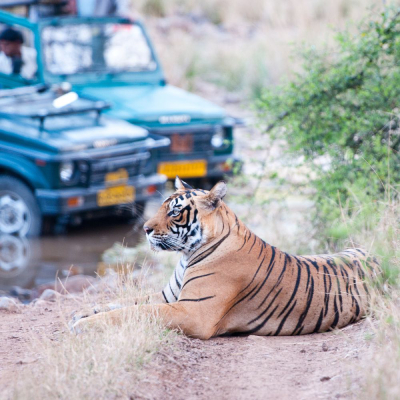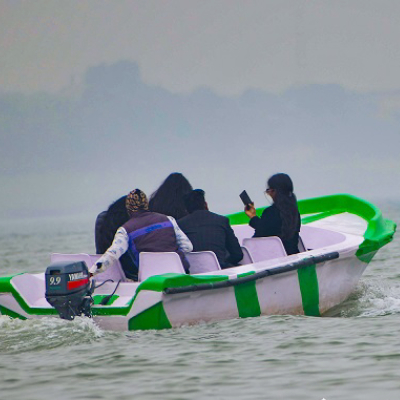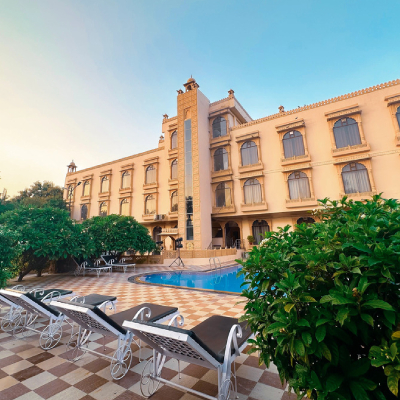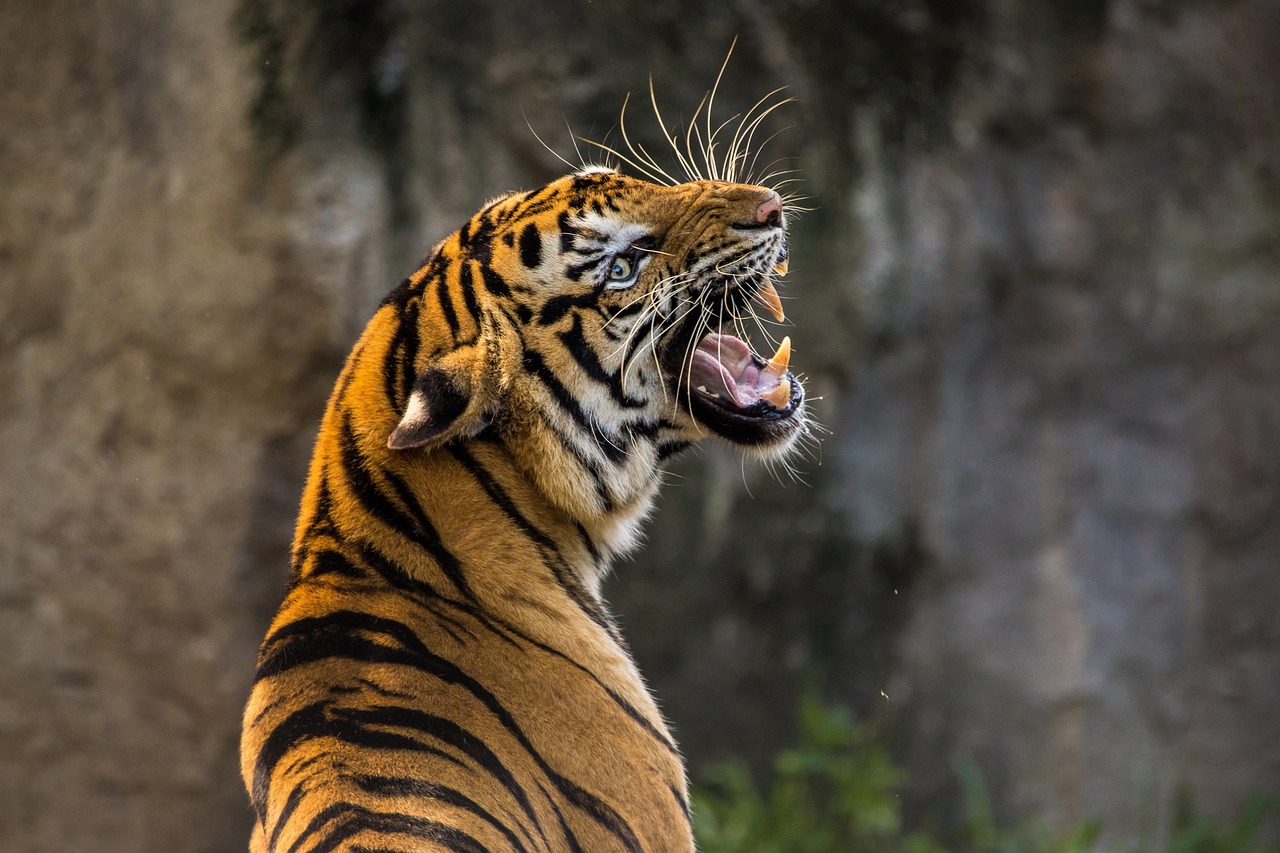Services we offer in Ranthambore National Park

Jeep Safari Booking

Chambal Boat Safari Booking

Hotel Booking
Ranthambore National Park
Secure your online safari booking for Ranthambore National Park here, offering both Jeep and Canter Safari options. Explore the official site for Ranthambore Jungle Safari. Situated in the Sawai Madhopur district of southeastern Rajasthan, approximately 130 km from Jaipur, Ranthambore National Park stands as one of the largest and most renowned national parks in Northern India. Once a favored hunting ground for the Maharajas of Jaipur, the park has transformed into a prominent wildlife tourist destination, captivating the interest of wildlife photographers and enthusiasts alike.
For wildlife enthusiasts seeking an immersive experience in the natural habitat of majestic predators, Ranthambore National Park beckons. Revered as the Best Tiger Friendly Land, it stands as the largest and most renowned national park in northern India. Once the favored hunting ground of the Maharajas of Jaipur, it has transformed into the Ranthambore Tiger Reserve Area, an iconic tourist destination offering encounters with friendly tigers.
Situated 170 km away from Jaipur, Ranthambore National Park provides a tranquil escape from bustling cities. As the only remaining large intact dry deciduous forest in India, it boasts a structure reminiscent of a bygone era. Surrounded by numerous water bodies, it offers respite to forest inhabitants during scorching weather, creating an environment with an incredible blend of nature's wonders.
The park's climate and vegetation are distinctive, with around 320 bird species, including both residents and migrants. Additionally, there are 40 mammal species and over 35 reptile species, attracting a diverse array of wildlife enthusiasts. Apart from tigers, the park hosts wild cats such as leopards, caracal, jungle cats, rusty-spotted cats, and occasional reports of fishing cats and leopard cats. Commonly spotted creatures include Sambhar, wild boar, Indian wild cats, jackal, and the rare wolf.
Due to its varied terrain and abundance of water bodies, Ranthambore National Park boasts an excellent population of birds, making it a birdwatcher's paradise. However, the dry climate limits the presence of amphibians. Tigers, the park's regal inhabitants, are easily spotted during the day, engaged in hunting or caring for their cubs.
RANTHAMBORE NATIONAL PARK
Ranthambore National Park stands as a renowned and distinguished tiger habitat, distinguished as the world's largest national park boasting a diverse array of species, flora, and fauna. The park derives its name from the central Ranthambore fort, a historic monument that has witnessed significant changes and events throughout the park's history.
In the pre-independence era, the Indian subcontinent was covered with extensive forests. However, with escalating population and industrialization, rampant exploitation led to the depletion of these forests, consequently affecting the nation's wildlife. Recognizing this environmental concern, stringent rules and policies were implemented for the protection of Ranthambore National Park, which was initially under the ownership of the Maharajas of Jaipur.
Before 1955, the park served as an exclusive hunting ground for Jaipur's royal family. In 1955, it was designated as the "Sawai Madhopur Sanctuary." Concerns about the dwindling tiger population prompted the declaration of the sanctuary as part of the Project Tiger initiative in 1973, leading to the formulation of stricter policies. A significant milestone occurred in 1980 when 282.03 sq. km of the sanctuary was designated as a national park, resulting in reduced government collection of forest produce. Subsequent developments included the establishment of the Kela Devi Sanctuary on the north side in 1983 and the declaration of the Sawai Mansingh Sanctuary in 1984, covering an additional 130 sq km. These initiatives marked essential steps in the ongoing efforts to safeguard and preserve Ranthambore National Park's biodiversity.
Ranthambore Park
Ranthambore By Air: Reaching Ranthambore National Park is convenient despite the absence of a direct airport. The nearest airport, Sanganer Airport in Jaipur, is situated 180 km away. Travelers can cover this distance easily using taxis or buses. Regular flights operate between major cities such as Delhi, Mumbai, Kolkata, and Ahmedabad. Direct flights to Jaipur are also available from these cities.
Ranthambore By Rail: The journey to Ranthambore National Park by rail is both easy and comfortable, with the nearest railway station being Sawai Madhopur Railway, located 11 km from the park. Travelers can take cabs, taxis, or buses to reach the destination, all of which can be conveniently booked online. Various trains connect different cities to Ranthambore, offering a hassle-free rail journey. Daily trains operate between Jaipur Railway Station and major cities like Delhi, Mumbai, Ahmedabad, and Kolkata. Online bookings are available for a comfortable train journey.
Ranthambore By Road: Reaching Ranthambore National Park by road is straightforward, with excellent connectivity to major cities like Delhi, Ahmedabad, Mumbai, and Kolkata. The road distance from Delhi is approximately 417 km, from Ahmedabad is about 657 km, from Mumbai is around 1102 km, and from Kolkata is approximately 1572 km. Private state bus services, private cars, traveler buses, taxis, and cabs are all viable modes of transportation. The well-connected roads make the journey to Ranthambore simple and accessible.
Road Distances between Ranthambore and Other Cities:
- Delhi to Ranthambore: Approximately 381 km (Approx. 6 hours journey via NH8 and NH 11A)
- Jaipur to Ranthambore: Approximately 180 km (Approx. 3 hours journey via Rajasthan State Hwy 24)
- Agra to Ranthambore: Approximately 239 km (Approx. 4 hours journey via RJ SH 1)
- Bharatpur to Ranthambore: Approximately 202 km (Approx. 3 hours 37 min journey via RJ SH 1)
- Udaipur to Ranthambore: Approximately 388 km (Approx. 6 hours 10 min journey via NH 76 and RJ SH 29)
- Ahmedabad to Ranthambore: Approximately 640 km (Approx. 9 hours 47 min journey via NH8 and NH 76)
- Mumbai to Ranthambore: Approximately 1031 km (Approx. 16 hours 51 min journey via NH 3)


